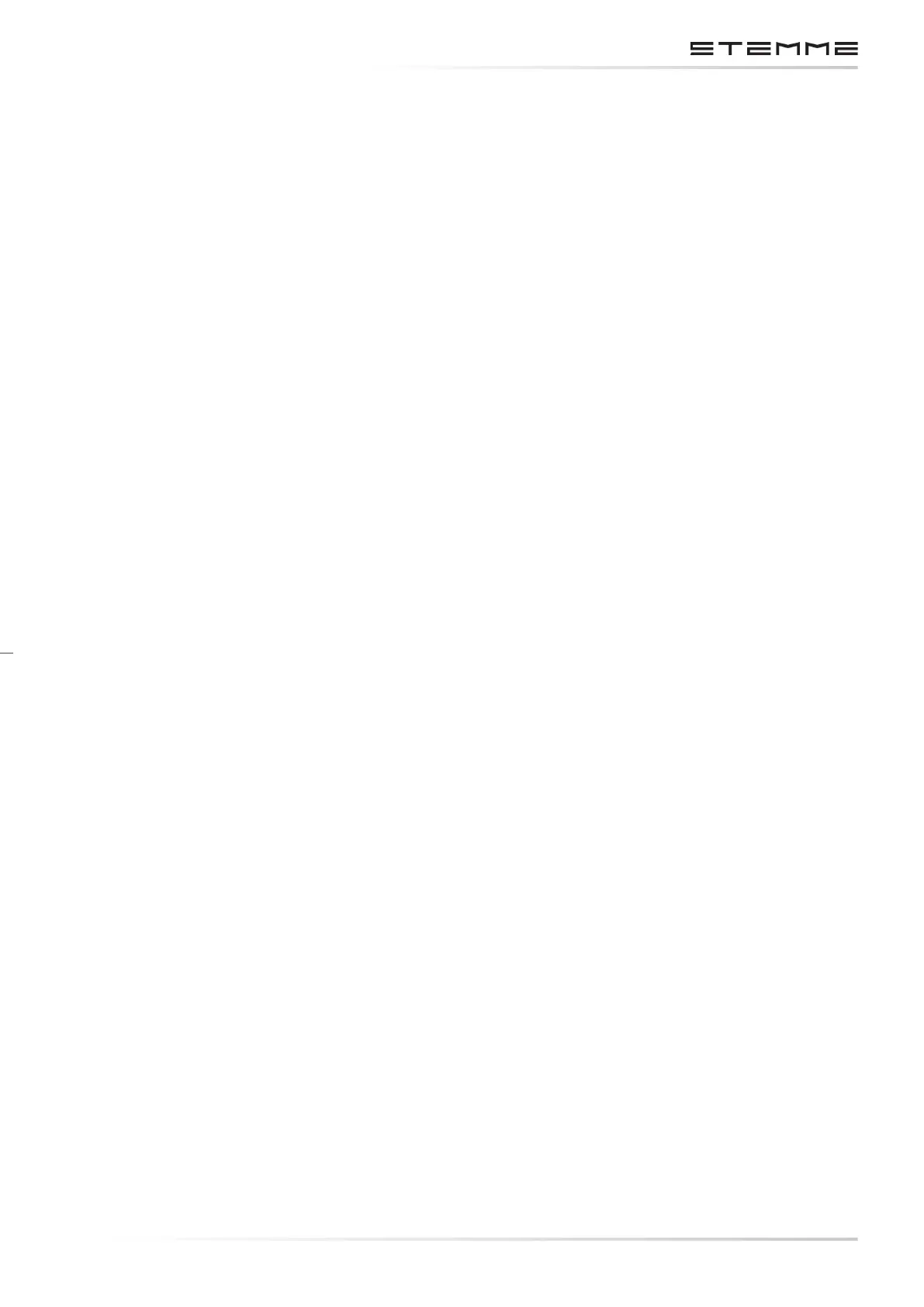DOCUMENT NUMBER:
L500-912.820 ISSUE JUL 20, 2016
AMENDMENT: 00
DATE:
CHAPTERPAGE 31
MAINTENANCE MANUAL STEMME S12
3. DESCRIPTION OF ASSEMBLIES
3.1 AIRFRAME, PRIMARY AND SECONDARY STRUCTURE
The Primary Structure includes:
• Wing spars, root ribs, and wing spar boxes
• Wing shells
• Center steel frame
• Tail boom and vertical stabilizer
• Front section of fuselage
• Horizontal stabilizer
• Fittings
The Secondary Structure includes:
• Control surfaces
• Cowlings, cooling air system ducts, cockpit components
3.1.1 WING
Structural design: 5 sections; CFRP-Spar with GFRP-shearweb, CFRP-sandwich skin.
The wing consists of four sections: A wing center section with a span of 9.9 m / 32.48 ft, two outer
wing sections and two wing extensions including winglets with a length of 1.9 m / 6.23 ft each.
Attachment of the wing center section to the fuselage is by means of four sliding bolts, attachment
of the outboard wings to the wing center section as well as the connection of wing extensions to
the outer wings is with one sliding bolt each.
A removable fairing covers the wing/fuselage junction. Beneath the fairings, free access to the
wing attachment, the control system joints and the combined aileron/ap controls is possible.
For disassembly, the wing center section can be lifted vertically.
The aps extend over the total span of the wing center section and the ailerons over the total span
of the outboard wings. The controls of aps and ailerons are interconnected (“aperons”), the
ailerons acting as dierential aps and the aps acting as dierential ailerons. The ap deec-
tion is reduced from the inner to the outer wing, the aileron deection is reduced from the outer
wing to the wing center section and from up to down deections (dierential aileron deection).
The ailerons of the wing extension are directly connected to those of the outer wing and have no
separate actuation.
Two-blade Schempp-Hirth air brakes are installed on the wing center section upper surface.
The aps and aileron gaps are sealed with elastic adhesive tape and a sliding layer on the upper
surface of the wing and with a textile tape (optional: elastic adhesive tape and sliding layer) on
the lower surface.
A boundary layer turbulator (adhesive 60° zigzag tape, leading edge at 69% of chord,
12 x 0.5 mm / 0.47 x 0.02 in) on the wing lower surface ensures a dened ow transition.
